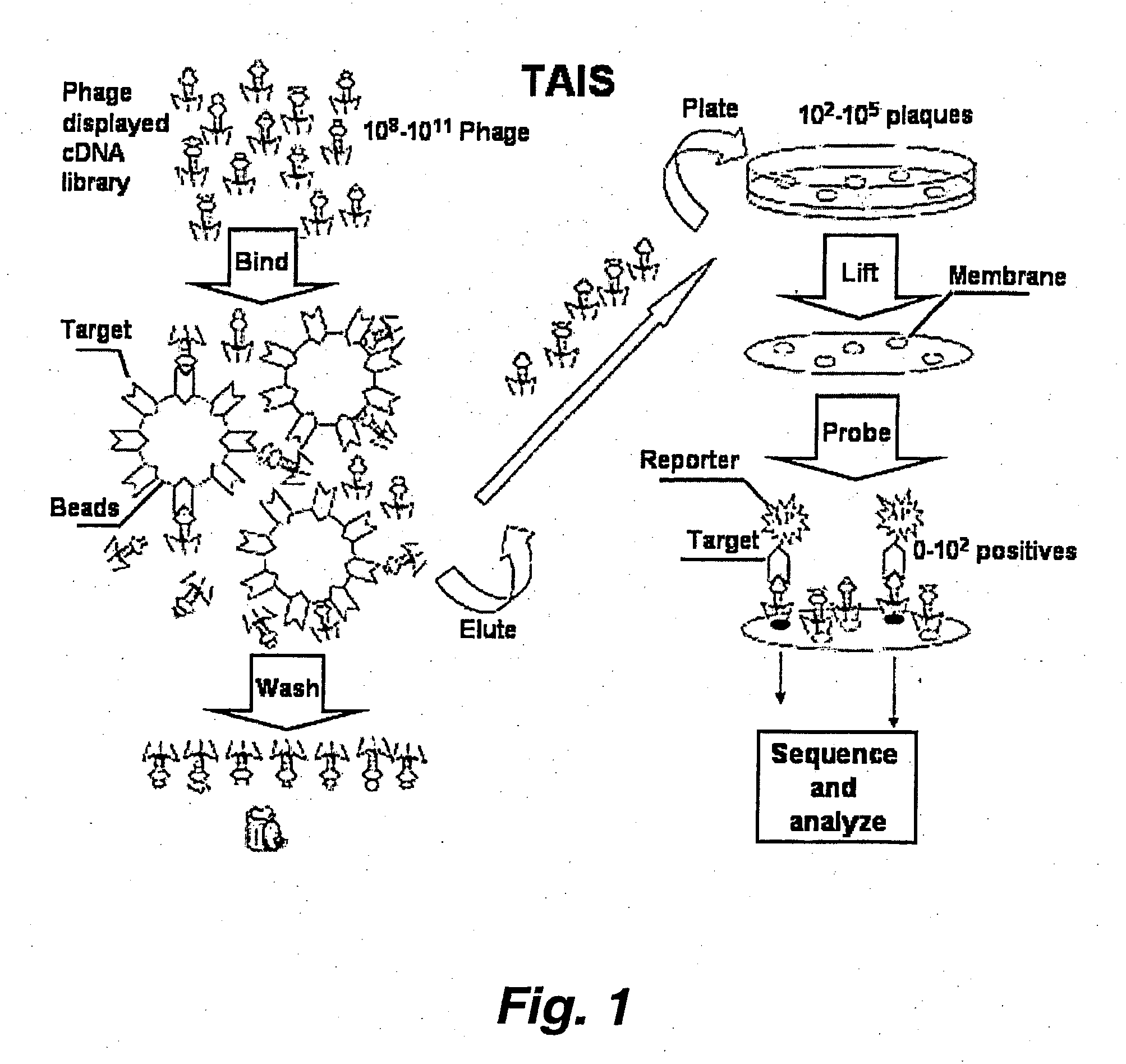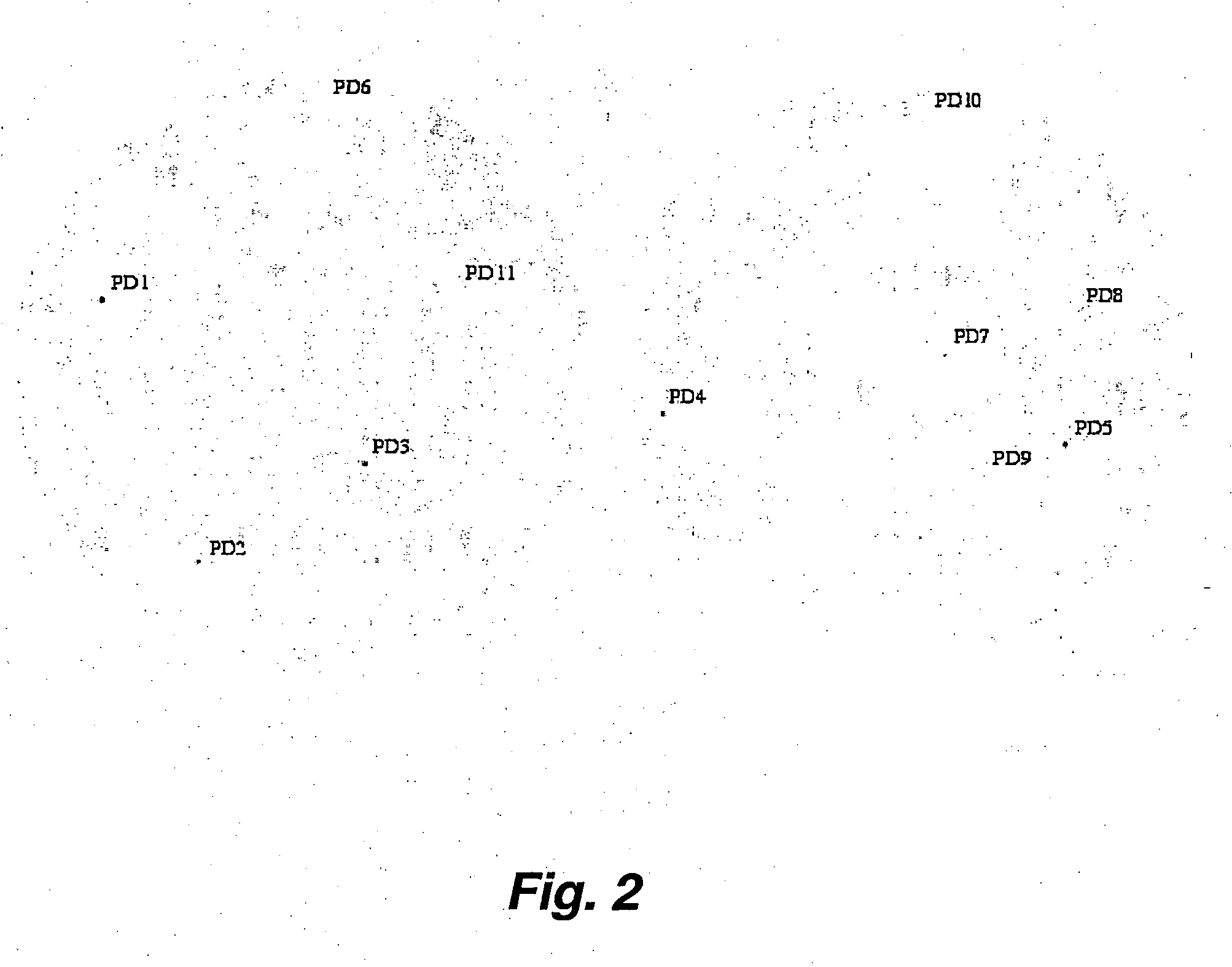Targeted-assisted iterative screening (tais):a novel screening format for large molecular repertoires
a technology of iterative screening and molecular repertoire, applied in the field of proteomics, can solve the problems of limiting the applicability of the two-hybrid system, poor performance, false positive rate, etc., and achieves high throughput, high efficiency and technical simplicity. , the effect of easy standardized outpu
- Summary
- Abstract
- Description
- Claims
- Application Information
AI Technical Summary
Benefits of technology
Problems solved by technology
Method used
Image
Examples
example 1
Use Of TAIS To Study Protein-Protein Interactions
[0070] Results from screening of a T7 cDNA library derived from the normal human brain (NOVAGEN. Cat. #70637-3. (2001)) are presented and discussed below to demonstrate the potential of TAIS in mapping of protein-protein interactions. SH3, PDZ and WW domains of the Abl, Src, Crk, PSD95 and Nedd4 proteins have been used as test targets. In total, 12 novel putative and 2 previously described interactions have been identified by TAIS for these well studied protein interaction modules.
[0071] Combinatorial peptide libraries displayed on the phage or synthesized chemically have proved to be an excellent tool to define ligand preferences of peptide interaction modules (Cheadle et al. (1994) J Biol Chem 269: 24034-24039; Rickles et al. (1994) Embo J 13: 5598-5604; Sparks et al. (1996) Proc. Natl. Acad. Sci., USA, 93: 1540-1544; Kay et al. (2000) FEBS Lett 480, 55-62). The recognition consensus of an individual domain can be inferred by anal...
PUM
 Login to View More
Login to View More Abstract
Description
Claims
Application Information
 Login to View More
Login to View More - R&D
- Intellectual Property
- Life Sciences
- Materials
- Tech Scout
- Unparalleled Data Quality
- Higher Quality Content
- 60% Fewer Hallucinations
Browse by: Latest US Patents, China's latest patents, Technical Efficacy Thesaurus, Application Domain, Technology Topic, Popular Technical Reports.
© 2025 PatSnap. All rights reserved.Legal|Privacy policy|Modern Slavery Act Transparency Statement|Sitemap|About US| Contact US: help@patsnap.com



